Quality of Life Survey / Global
It’s a living thing
Much of what defines a city’s quality of life can’t be quantified. We take a wider look to rank this year’s 20 best places to live.
Much of what defines a city’s quality of life can’t be quantified. We take a wider look to rank this year’s 20 best places to live.

This is monocle’s annual ranking of the world’s 20 most liveable cities. People often ask us how we arrive at such a list, the subtext being: how can you possibly compare something that is as complex and multifaceted as a city with another? You probably know that we aren’t the only organisation that attempts such an endeavour. But while other rankings tend to focus purely on hard data, we take a broader, more balanced approach. Sure, it’s very easy to compare, for example, one city’s gdp per capita with another’s and deduce which is the more successful in that respect. But how often do you consider such a metric when making a judgement about where to relocate, recommend to a friend or visit? Like the cities themselves, our opinions of them are based on a variety of factors – some clearly rational but others less obviously so.
In an age when one can consult all manner of worldly information in an instant, we think that it’s important to take a view – we are, after all, editors. If you want a detailed list of metrics comparing every city in the world, there are plenty of repositories for such things. But if you want to know what a city is like to live, work and play in, then you should ask someone who not only lives, works and plays there but whose judgement you trust too. That’s what we do. We have conversations with our correspondents and contacts who reside in the places that we’re ranking. Then, after consulting the data (yes, there are still many numbers involved) – things such as gdp per capita but also the price of a cup of coffee, whether you can get a decent meal after 22.00 and what time nightclubs close on a Saturday (or Sunday) – we discuss the findings among ourselves. After that, we arrive at our decision.
The final top 20 is a combination of science and, dare we say, art – both statistics and less quantifiable things. It considers the past, the present and the future but especially the past 12 months, and how well we feel that a city has done in that time. Every year we also focus on an area of current debate on what makes somewhere a good place to live. It has been remarked upon that in countries such as the US and UK, life expectancy has dipped and some younger generations, for the first time in history, are expected to live shorter lives than their parents. This year we compared average life expectancies in different cities as part of our ranking: quality also means quantity. As ever, we encourage you to disagree and debate us on the top 20. The more people who question what makes cities good places to live in, the better.
Key metrics explainer
Adopt: Initiatives and policies that would benefit the city.
Drop: Problem areas that are holding the city back.
1.
Munich
Germany’s economic engine.
POSITION IN 2023: 03
Adopt: Improvements in public transport and cycling infrastructure, instead of focusing on expensive tunnels for motorists.
Drop: The habit of awarding municipal jobs to local party members. The practice excludes outside experts.
Population: 1,512,491 (metro: 2,926,802).
Newspapers just for the city: 7.
Average monthly cost of renting a one-bedroom flat: €1,755 (including utilities).
Number of sporting clubs: 694.
Munich is literally Germany’s most attractive city. Since 2000, the populations of Berlin, Hamburg, Köln and Frankfurt have grown by about 15 per cent – but Munich’s has risen by almost a third. One reason is the city’s economic and intellectual draws. Of Germany’s 40 largest companies, seven hail from Munich. This has probably contributed to its status as Germany’s most expensive city. But talent is nurtured here. In December the city set aside an extra €668m for building and renovating nurseries, pre-schools and schools; with a total budget of €8.4bn since its inception in 2011, it’s Germany’s largest such scheme. On the other end of the academic ladder, the Technical University of Munich and the lmu München are the country’s top-two universities. The city’s proportion of employees with an academic degree is 41 per cent, also Germany’s highest.
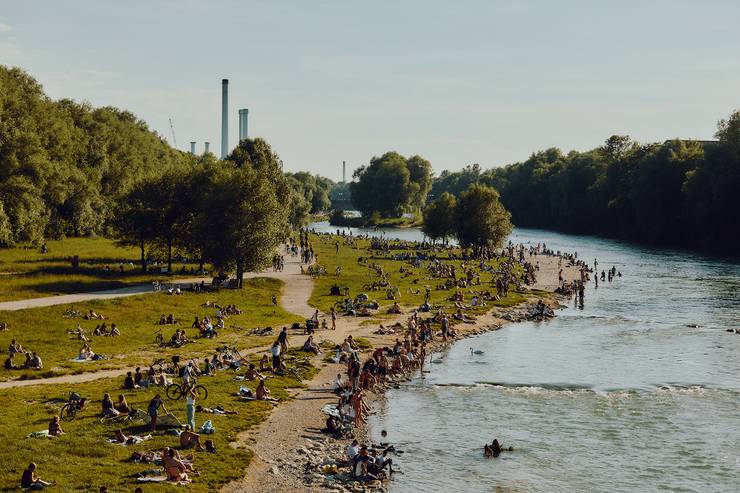
Munich is also the country’s best city for a healthy lifestyle. In an EU ranking of 38 German regions by life expectancy, Upper Bavaria, home to Munich, came first with 82.3 years. One explanation is the city’s access to nature: pristine environs, the river Isar and parks such as the Englischer Garten. New leisure facilities have opened too. Among them is Kunstkraftwerk Bergson, a power station converted into an arts venue. Last year, the city nearly tripled its newly installed solar power capacity with a scheme that supports small panels on private balconies. Munich’s future looks sunny. A worthy winner.
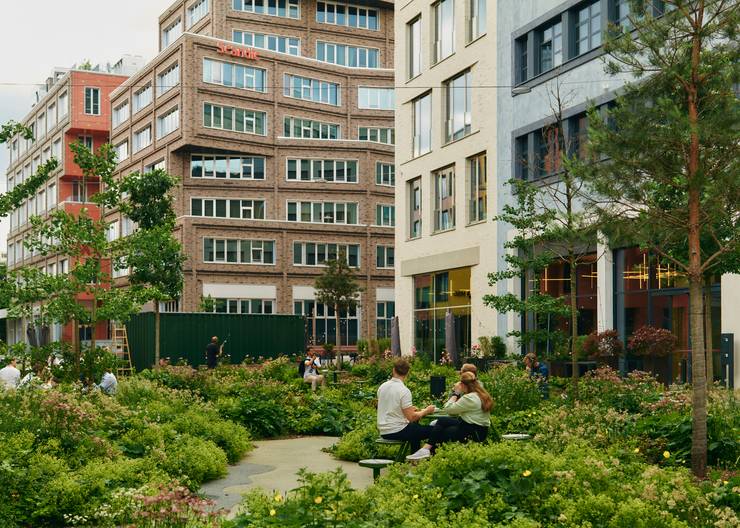

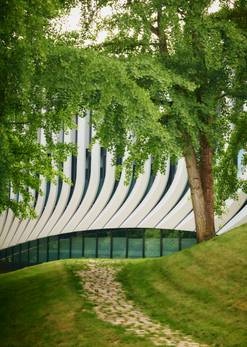
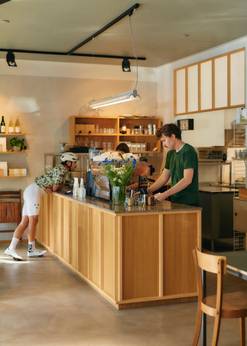
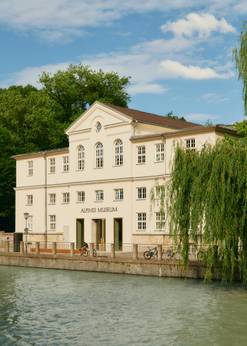
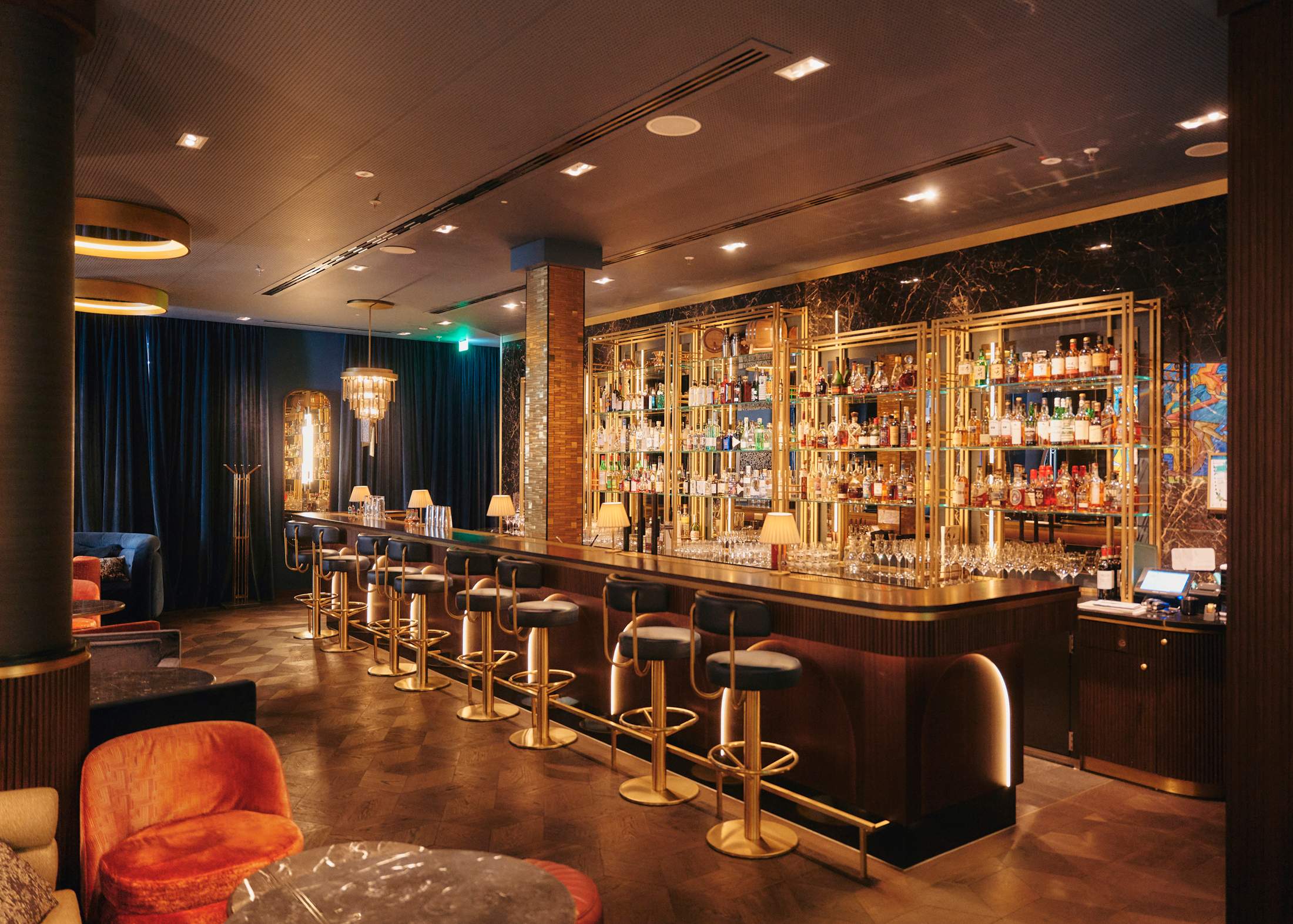



2.
Vienna
The city still improving as it grows.
Position in 2023: 01
Adopt: More than a third of Vienna’s population consists of foreign nationals. City hall should allow permanent residents to vote in council elections.
Drop: The authorities shouldn’t rush to sell off public spaces, such as a much-loved skate park in southeastern Vienna that is currently under threat.
Population: 2,006,134 (metro: 3,004,660).
Number of international destinations served by the main airport: 190.
Electric-car-charging points: 875.
Since topping last year’s survey, the population of Austria’s capital has exceeded two million for the first time since 1910. This growth has taken place as the city works to improve its residents’ access to healthcare and leisure: Vienna has increased its number of mental-health facilities for young people, for example, and has upgraded its public swimming pools. There’s also a new beach on the Danube near the UN office. A place for the diplomatic corps to cool off? God knows they need it.
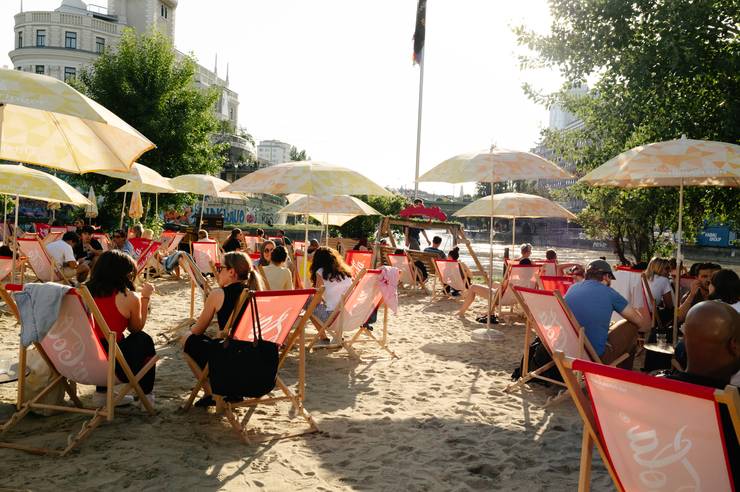
True to its social-democratic ethos, Vienna continues to impress when it comes to affordable housing. In May the city unveiled its newest Gemeindebau (municipal building) containing 118 flats, the 10th such new-build since the programme was restarted in 2015 after a 10-year hiatus. Another milestone came a few weeks earlier when Austria’s parliament voted to give local councils the power to levy a vacancy tax on owners of empty homes. The measure could mobilise as many as 80,000 properties and help to stabilise housing prices.
Last year, Vienna won the EU’s Best Organic City award, thanks to its municipal food brand, Wiener Gusto, which produces flour, lentils, meat and more. In culture, the Wien Museum reopened in December after a painstaking four-year refurbishment. As a bonus, admission to its permanent exhibition, which tells the city’s history in 1,700 objects, is free of charge, a first for an Austrian museum.
3.
ZürichThe health-conscious harbour city.
Position in 2023: 04
Adopt: A tougher strategy for tackling the city’s out-of-control grafitti problem.
Drop: Zürich’s strict Sunday-trading hours. Liberalising these would bring more life to the city’s streets.
Population: 445,015 (metro: 1,341,246).
Average life expectancy: 81.6 (men), 85.4 (women).
Number of outdoor pools or beaches: At least 16 – plus numerous lakeside swimming clubs.
Percentage of commuters who cycle to work: 21.9.
Zürich retains its status as that rare thing: a quaint harbour city in a landlocked country where the trains and trams run on time. But you knew that already. What you might not know is that the city’s food scene is currently benefitting from a new wave of young restaurateurs, many of whom are graduates of Switzerland’s celebrated hospitality schools. This means that the service runs on time too. There has also been a spate of infrastructure projects across Zürich, including new tram lines, refreshed train stations and verdant parks in hitherto lesser-served parts of the city.
Last year, Zürich had a recordnumber of overnight stays. And it remains a city in which outsiders are keen to put down roots: more than 30 per cent of residents were born abroad. Many were drawn here by the high living standards (and salaries) but also by the opportunity to live a happy and healthy life. Some 76 per cent of the population exercises at least once a week – an impressive statistic that reflects the wide range of walking, swimming and team-sports clubs in the city, many of which are integral to its social scene.
While Zürich’s residents admirably make the effort to stay in shape, the city itself could do with a little extra maintenance: specifically, the authorities urgently need to get a grip on the widespread graffiti problem. If the city wants to win its bid to host next year’s Eurovision Song Contest, it should put on its freshest, cleanest attire.
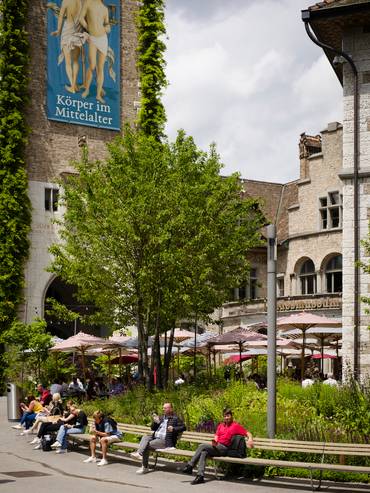
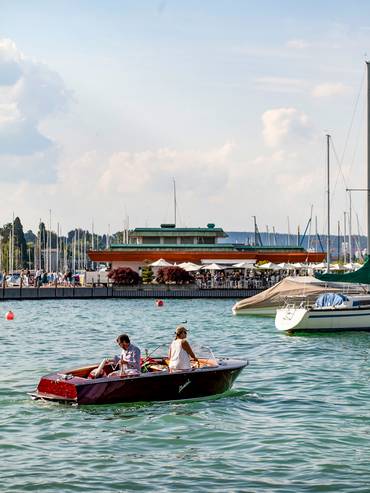



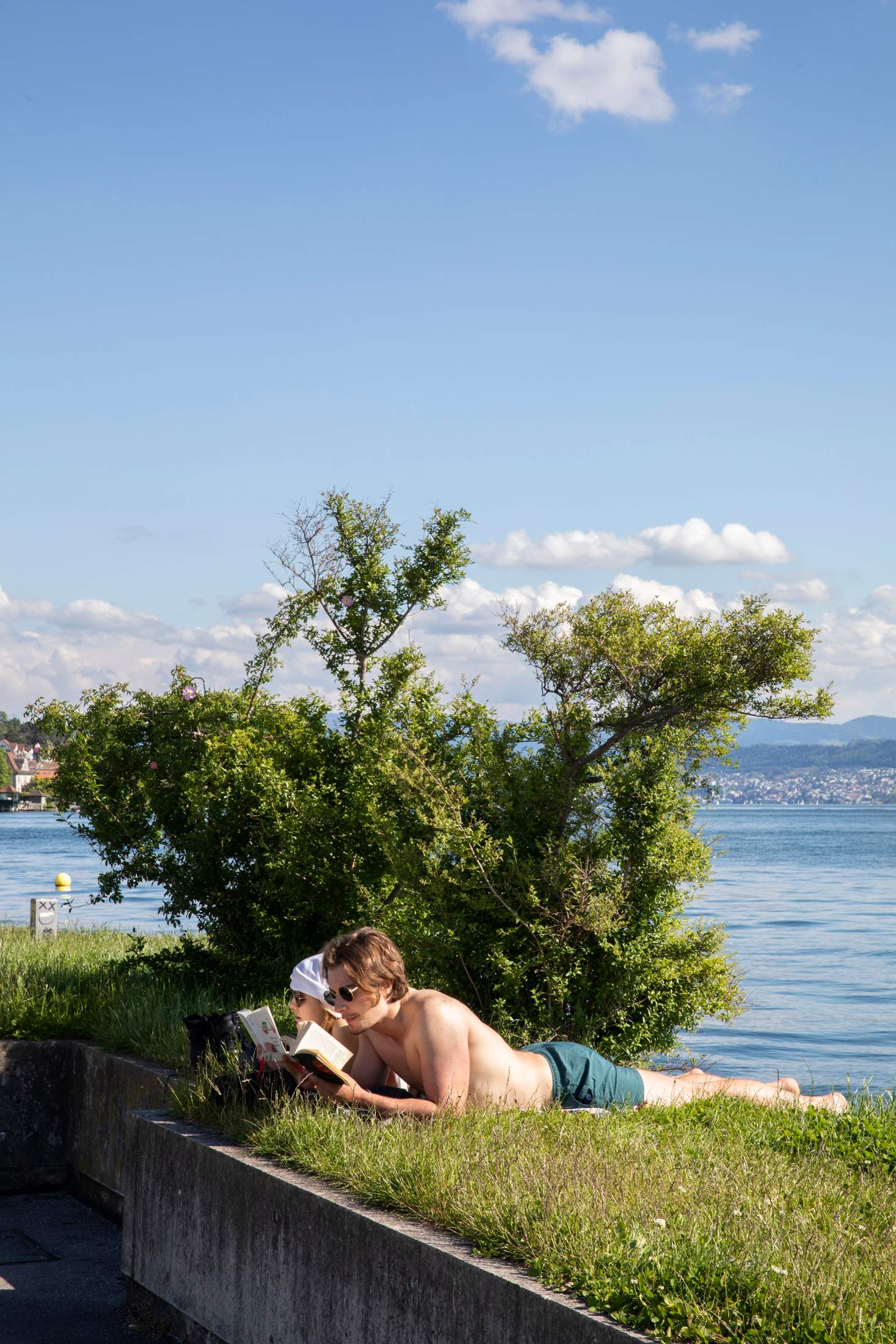


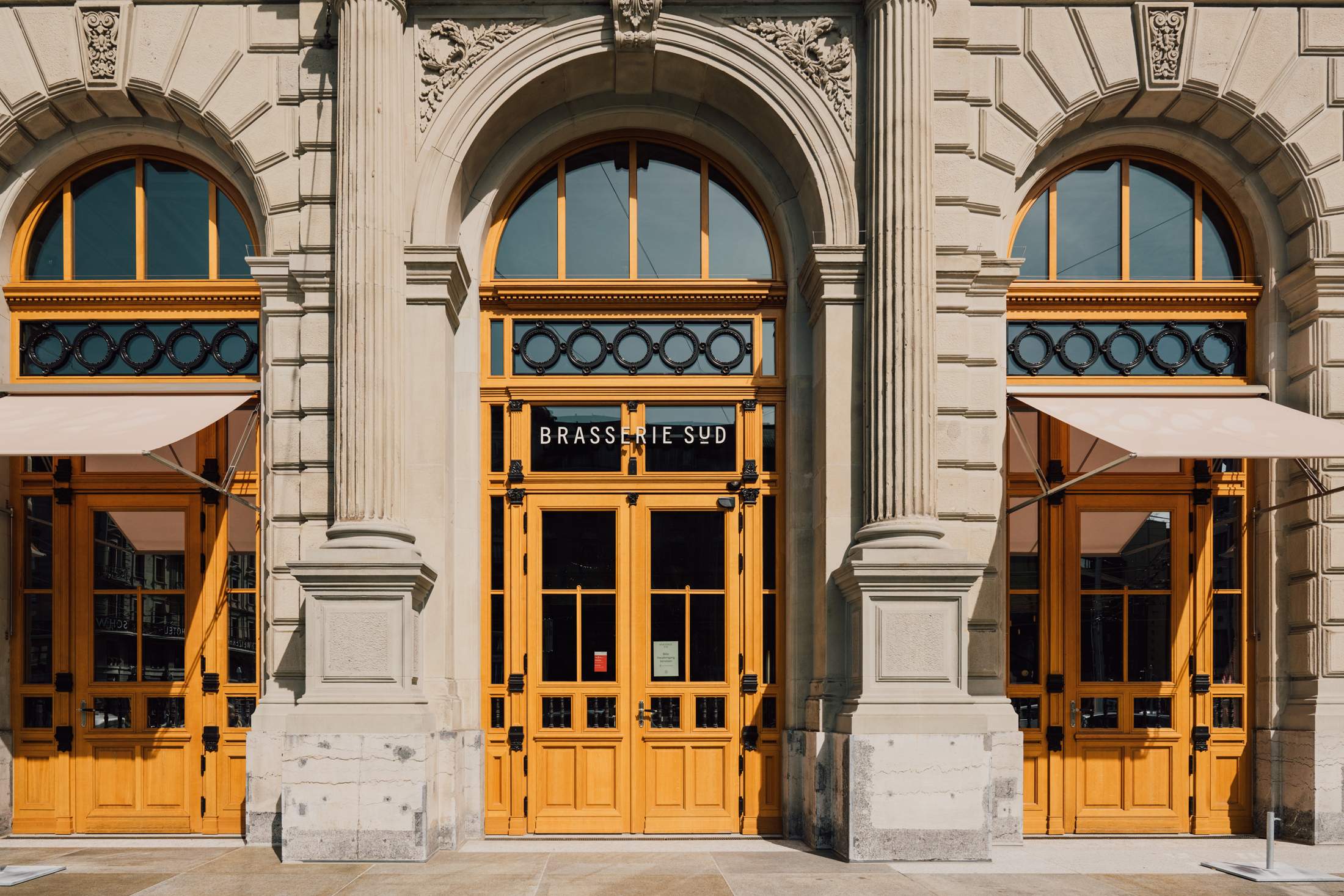
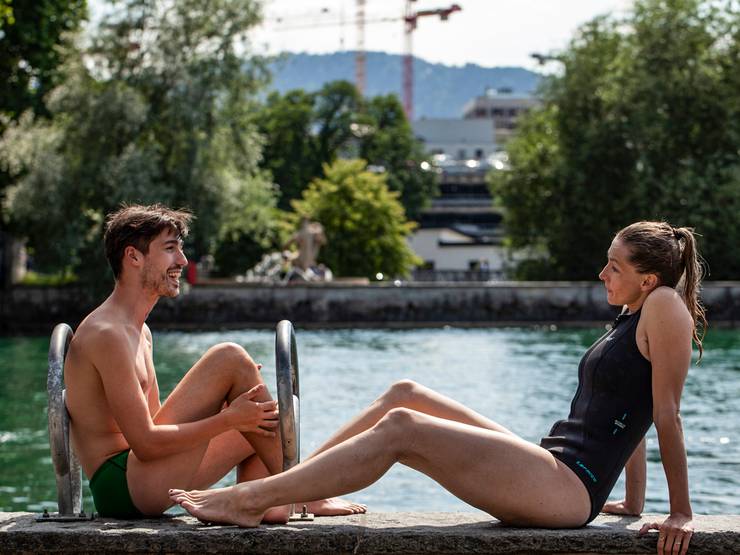
Izmir
When it rains in Izmir, a city on Turkey’s Aegean coast, it pours. Most of its entire annual rainfall comes between November and March, while there’s hardly any at all in July and August. In a city of 4.5 million people built on creaking infrastructure, that means lurching between flooding and droughts. Now a project to turn urban surfaces into sponges is helping to break the cycle.
“Sponge cities” are places that modify every surface where water collects to drain it into storage reservoirs. In the dry months, this supply can be tapped. The idea can be adapted to suit a city’s specific needs. Rain gardens and water-retention parks, designed to channel precipitation into underground filtration systems and storage ponds, also increase green space. Meanwhile, concreted areas such as plazas and school playgrounds can be retrofitted with drainage systems.
Launched in China in 2014, the sponge-city concept has now spread across the world. In 2020, Izmir became the first Mediterranean city to adopt this approach. Since then, it has installed 5,000 water tanks on roofs across the city; in March a school was fitted with rain gardens and collection channels. Seepage tunnels and a pond have been constructed on an agricultural plain that was prone to drought. About 10,000 rain gardens have been planted too.
“Wherever there is concrete, it should be turned into something that can suck up water,” says Tunc Soyer, the city’s former mayor who introduced the project. The target is for 70 per cent of the rainfall to be saved, with car parks and cemeteries eventually converted for this purpose. Soyer says that Izmir’s experiment will benefit the entire country and region. “We need to find a solution soon because this issue will get worse with climate change.”
4.
CopenhagenThe future-ready capital city.
Position in 2023: 02
Adopt: A more courageous approach to new builds. Allow some taller buildings in the city centre (but only if they’re good).
Drop: Rehousing immigrants further out of the city centre and the steady transformation of social housing into upmarket apartments. Though intended to alleviate social inequality, it doesn’t look good.
Population: 659,352 (metro: 1,945,157).
Average monthly rent of one-bedroom apartment: dkk6,500 (€871).
Retail occupancy rate: 93.7 per cent.
In the 12 months since our last survey, Copenhagen has lost one of its oldest landmarks: Renaissance-era stock-exchange building Børsen, which burned down in April. Needless to say, it will be painstakingly rebuilt. Construction is a theme these days in the Danish capital – a sign of a booming economy. Five new Metro stations will open this year in Valby and, beyond that, Sydhavn, the rapidly growing residential zone on the harbour to the south of the city.
Late last year, Copenhagen opened the new Opera Park beside the Royal Danish Opera House. Designed by Cobe Architects, it has brought some much-needed greenery to the harbour front. But it has also been criticised for its addition of 300 underground parking spaces; many residents feel that the city shouldn’t be encouraging the use of private cars.
The second phase of Copenhagen’s dkk20bn (€2.7bn) expansion onto the artificial island of Lynetteholm began late last year. It will incorporate a ring road and a tunnel beneath the harbour, connecting it to the north of the city. Lynetteholm will also provide homes for 35,000 people, as well as defences from rising sea levels.
Denmark’s first dedicated children’s hospital is under construction, gathering medical services for patients aged 18 and younger under one roof. Designed by 3xn, the €320m project is scheduled for completion in 2026. It’s a big investment in families by a city that’s already well known for its humane generosity.
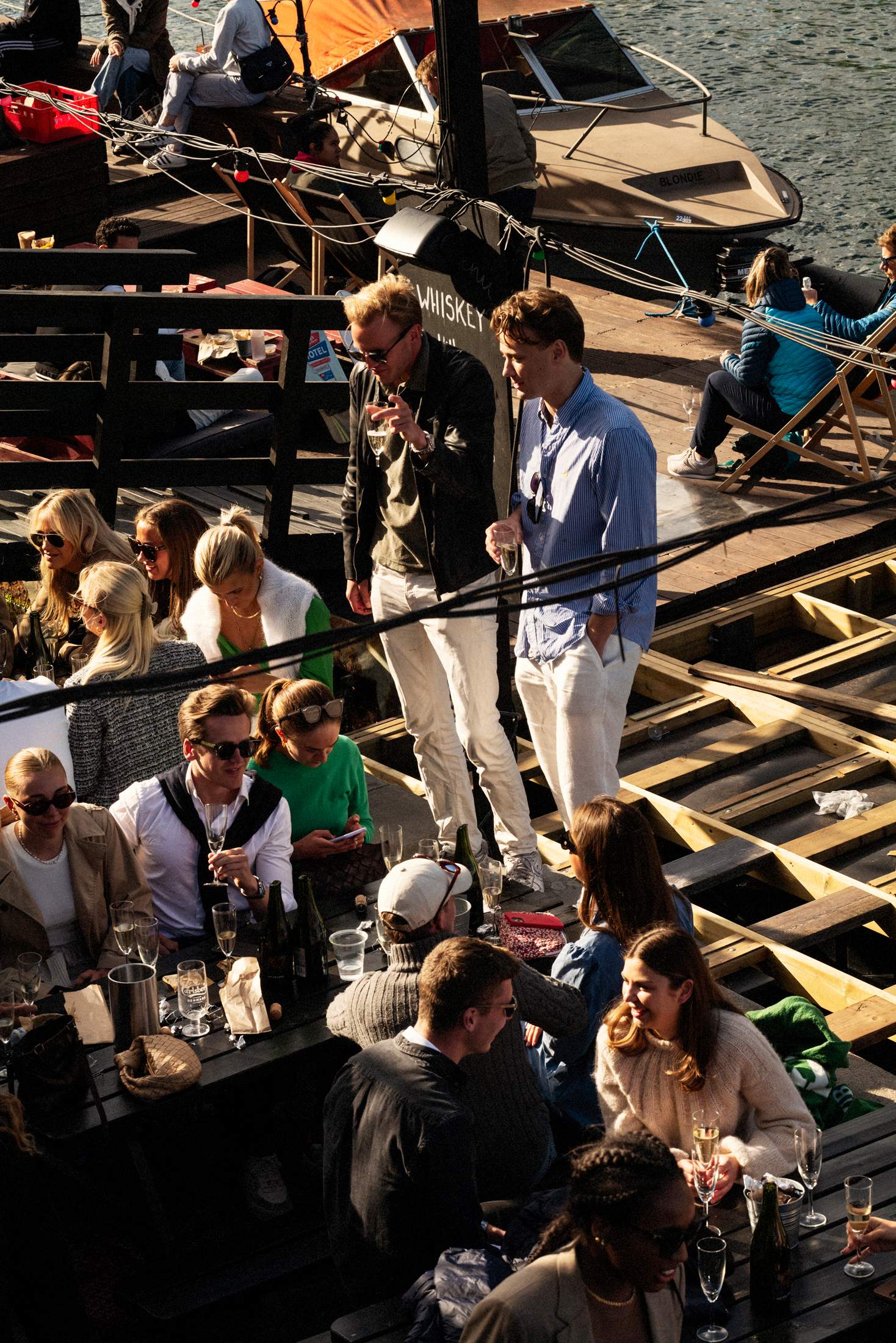

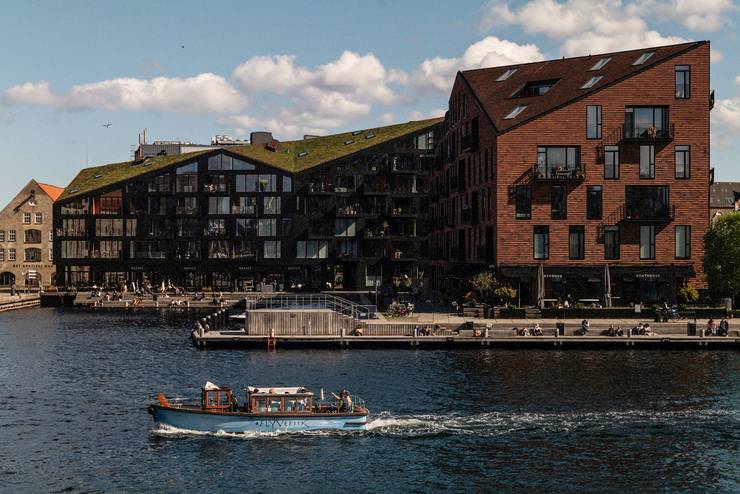
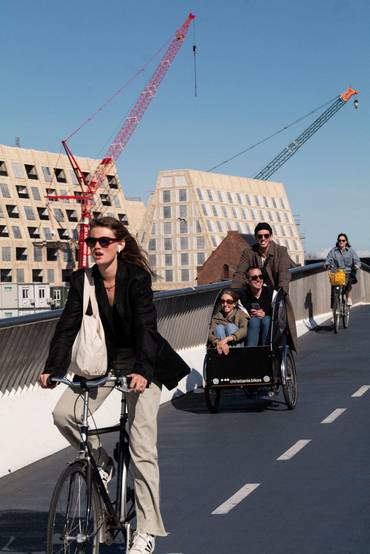
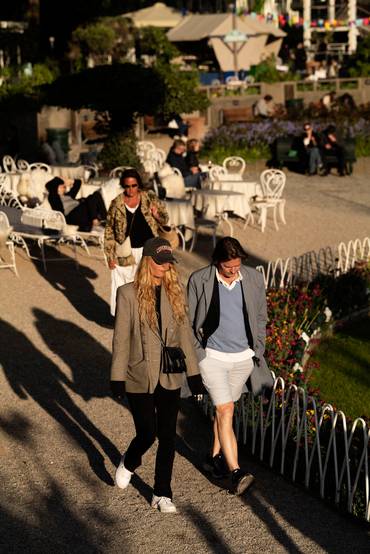
5.
MadridA city mixing business and leisure.
Position in 2023: 08
Adopt: A friendlier policy towards foliage. In the past two years, 9,000 trees have been cut down.
Drop: The plan to illuminate the Manzanares river at night. The rewilded waterway is a delicate ecosystem that could be imperilled by the intervention.
Population: 3,332,035 (metro: 7,005,286).
Independent bookshops: 584.
Life expectancy: 82.5 (men), 87.62 (women).
Michelin-starred restaurants: 22.
How can a place that’s as fast paced as Madrid also be so good at kicking back? Clues to the city’s most impressive data point – the life expectancy of madrileños is among the highest in the oecd – are easy to spot. People tuck into meals made from fresh Spanish produce on packed terraces. Colour and creative expression pop from shop windows. Sunbathers stretch out in parks and on rooftops.
Over the past few years, Madrid has revamped many of its public spaces, making its favourite pastime, el paseo (aimlessly strolling), more pleasurable than ever. Now with wider pavements, more public benches, water fountains and thoroughfares that consider pedestrians, could the Spanish capital finally be giving Barcelona’s urbanism pioneers a run for their money? Upgrades along Calle de Alcalá and the Puerta del Sol, a revamp of the Usera district (known for Madrid’s Chinatown), a soon-to-be- finished green corridor that brings the Parque del Oeste closer to the city centre and a huge new park in Cuatro Caminos all make a persuasive case.
Other factors contribute to residents’ wellbeing. Madrid is the capital of Spain’s sporting prowess, from world-class football to tennis (though the Madrid Open, criticised for poor management, still needs to raise its game). It also boasts a growing network of padel courts, running tracks and open-air gyms. One thing’s for sure: madrileños know how to balance their leisurely lounging with some active lunging.
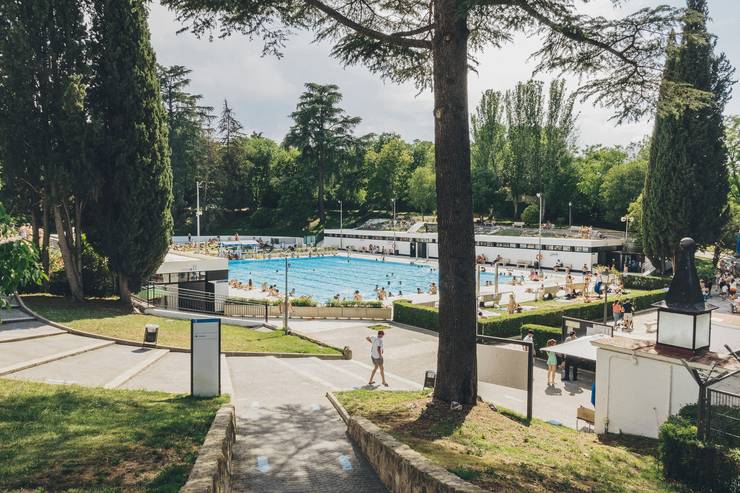
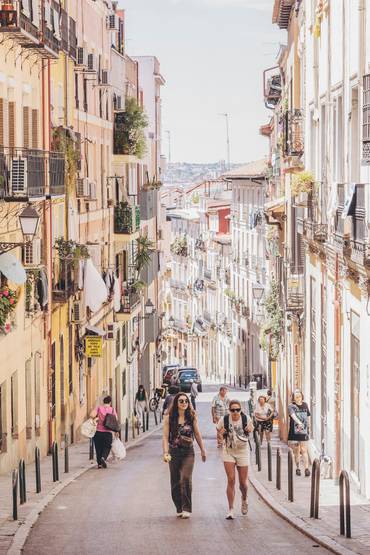


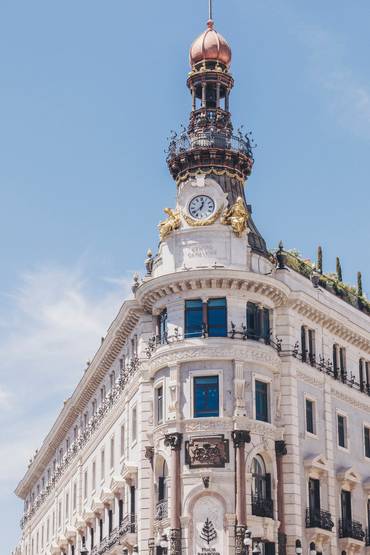
6.
LisbonThe ever-evolving melting pot.
Position in 2023: 09
Adopt: More green spaces and places for outdoor recreation.
Drop: Rampant property speculation. The city’s public-housing policies to date have been inefficient and have pushed many younger and middle-income earners out of the inner city.
Population: 548,703 (metro: 3,035,487).
Annual hours of sunshine: 2,799.
Percentage increase in prime rent since last year: 13.9.
Number of international destinations served by the main airport: 132.
In April, lisboetas flooded the streets of their city to mark the 50th anniversary of the peaceful Carnation Revolution, which toppled a fascist dictatorship. Though they’re mild and welcoming by nature, resistance is also part of their dna. Their current battle? The city is contending with the effects of its own charms.
Beautiful, safe and surrounded by nature, and with attractive tax incentives for expats, the Portuguese capital has become a haven for foreign investment, low-cost tourism and digital nomads in recent years. Lisbon is now prettier, cleaner and more vibrant than ever, benefitting from the energy and money of its new residents. A late-afternoon drink at one of its many small parks is a perfect way to sample this delightful melting pot.
On the other hand, house prices have soared and the city’s rising cost of living is incompatible with some of the lowest wages in western Europe. Lisbon’s dusty, picturesque charms have also been rapidly giving way to luxury hotels and tourist traps.
The city’s authorities announced measures last year to create more accessible housing but, so far, these have had no discernible effect. Meanwhile, a recent decision revoked restrictions on short-term rentals. Though highly walkable, there are major problems with traffic and public transport. In May city hall promised a big boost in the number of bike lanes and an expanded rental-sharing scheme, a welcome move for lisboetas pushed to the edges of the city.
7.
TokyoThe best that Japan has to offer.
Position in 2023: 06
Adopt: Tokyo needs to keep an eye on its past as well as its future. Too many important buildings are being demolished to make way for unworthy successors.
Drop: The notion that people will take home their rubbish. The tourism boom has been accompanied by a rise in litter: the city urgently needs more bins.
Population: 9,660,461 (metro: 37,115,000).
Number of public parks: 11,982.
Unemployment rate: 2.5 per cent (prefecture).
The Japanese capital is the nation’s economic engine, accounting for 20 per cent of the country’s gdp and half of its listed companies. But it is more than just a money-making machine: it’s also a magnet for the best food, retail and art that Japan has to offer. The challenges facing the country (and its neighbours), such as a greying population and a falling birth rate, are being tackled here. As part of a long-term strategy, the city is focusing on the “three Cs” – children, choju (“longevity”) and community – by supporting those who want to have children, encouraging senior citizens to play a more active role and investing in skills that will equip the population for the future.
Large-scale development continues at an unstoppable pace but amid all the newness, it’s good to see Tokyo acknowledging its remarkable craft heritage. Workshops producing knives or printing textiles mustn’t be allowed to sink under the weight of modern glass and steel. Tourism is now at record levels. That’s excellent news for the economy (the low yen has made Japanese food and shopping even more appealing to visitors). For residents, it’s both good and bad. There’s a mild exasperation that even the most obscure ramen shops and cafés now have long queues; apartment buildings have signs forbidding short-term rentals and taxis can be hard to come by. Still, Tokyo life continues to defy big-city trends: service is polite, the streets are safe and people take pride in their environment.
8.
MelbourneThe thriving all-rounder.
Position in 2023: 10
Adopt: A more concerted effort to scrub up Melbourne’s beaches.
Drop: The city’s overreliance on cars. More – and better – bicycle lanes need to be added, particularly in the city centre. Potential cyclists would feel much more confident if physically separated infrastructure was installed.
Population: 177,396 (metro: 5,207,145).
Number of restaurants in the city: circa 3,500.
Average commute time: 65 minutes.
Annual hours of sunshine: 2,380.
Melbourne hovers near the top of most global surveys of the best places to live: it has world-class amenities, good hospitals and schools, a buoyant economy and a vibrant creative scene. But there’s discontent about housing and mobility. The rental market is squeezed and many are struggling to find a place to live in the neighbourhood of their choice. Areas beyond the middle-ring suburbs are poorly served by public transport, which limits residents’ access to many of Melbourne’s much-vaunted attributes.
The city’s attractions are concentrated in its centre so it’s unsurprising that most want to live within easy reach of them. Earlier this year a tight state budget forced local authorities to postpone plans to build a rail link to the international airport, along with other big infrastructure schemes. The rail link is something that Melburnians dearly want but disagreements over the details have held the project back.
Improvements to infrastructure have continued at pace, in particular when it comes to upgrades to local rail. Melbourne is the capital of Victoria, whose economy grew by 2.5 per cent last year, outpacing all other Australian states. Crime rates are falling, indicating that the rise in income is being felt somewhat equitably.
One thing that Melbourne does well is put its best face forward. Signs of its creative community are visible everywhere. It has excellent healthcare and education options, sprawling parks and top surf beaches a couple of hours’ drive down the coast.
USA
Many economists will tell you that the US economy has been growing this year at a surprising rate. And yet, in April, consumer confidence dropped to its lowest level in more than two years. In other words, the US economy is doing well but this hasn’t translated into improvements in quality of life for most Americans – largely because of the country’s high cost of living.
That might be the biggest problem facing Joe Biden ahead of November’s election. Voters rate the economy and cost of living among their top issues and trust Donald Trump to handle them better. They don’t necessarily care if the president has anything directly to do with whether the economy is chugging along or sputtering. It’s about a feeling and, right now, it’s not looking great for Biden.
The public mood is rather contradictory. Americans worry about unemployment, even though the country’s joblessness rate has held steady at less than 4 per cent. They worry about companies raising prices despite wages rising at a similar clip. One area that could be to blame is rent: the cost of housing is rising fast.
Beyond that, Trump’s explanation for why life might feel difficult for so many Americans isn’t inaccurate. Inflation has been declining but, as he puts it, “It’s a lot of inflation when added to the inflation that we’ve suffered.” This view is generally supported by economists. “The cost of living remains high so consumers aren’t feeling the benefits of a strong labour market,” says Joanne Hsu, director of consumer surveys at the University of Michigan’s Institute for Social Research. “Consumers are aware that inflation has eased and labour markets are strong but people still don’t feel that they’re thriving. That’s the key issue.” Fairly or not, Biden’s first term will be remembered as a time of rising living costs – and that’s never good for a re-election campaign.
9.
StockholmA city of hope and ambition.
Position in 2023: 05
Adopt: Better use of the city’s 57 bridges. How about some retail or hospitality beneath the traffic?
Drop: Hospital staff having to do overtime, often without pay, which affects them and their patients negatively.
Population: 988,786 (metro: 2,377,081).
Average monthly rent on a one-bedroom apartment: sek16,398 (€1,465).
Number of museums: 56.
Chain test – how many Starbucks? 3.
Following its lengthy renovation, Stockholmers can at last enjoy Vattentorget, a section of the city’s water-lock area connecting the old town with Södermalm in the south. But it’s not all good news: in the past few months, the housing market has wobbled and levels of gang-related crime have gone up.
Luckily, change could be afoot. House prices are ticking steadily back upwards and those hoping to sell are setting their sights on further recovery over the next few months. As for crime, the police now have a remit that incorporates national co- operation, which many see as a promising strategy. Meanwhile, the city, which is run by a green-red coalition, will enact the world’s first fossil- fuel-free zone later this year, making it a pioneer of implementing robust, on-the-ground climate policies.
Stockholm is a growing city. In 2025 its population is expected to surpass the one million mark. Though housing stock is tight, plans for an entirely new neighbourhood are in the works. At some point in the coming decade, a development will be completed near Bromma Stockholm Airport, a 20-minute drive northwest from the city centre. The project is expected to deliver 22,500 homes and many new jobs.
Optimism is high in Stockholm. Smart new restaurants and shops are springing up to capitalise on the good vibes and returning spending power. The future is looking bright for this northern star.
10.
ParisThe shining cultural juggernaut.
Position in 2023: 12
Adopt: A better cycling culture. Though Paris’s network of bike lanes has recently expanded, it will take a while before two wheels become the norm.
Drop: The bureaucracy, a hindrance to entrepreneurs that can turn even the most quotidian administrative tasks into an Odyssean undertaking.
Population: 2,102,650 (metro: 12,997,058).
Average working week: 35 hours.
Number of City of Paris libraries: 57.
Annual hours of sunshine: 1,735.
It’s a big year for Paris. A perennial cultural high-flyer, the City of Light will be showcasing its bold vision of sustainability and social inclusion as the Olympic crowds descend. Its long-neglected northern suburbs have undergone a major face-lift, luring global powerhouses such as Tesla, while ambitious public-housing policies have helped to ensure a baseline of mixité sociale.
The French capital’s creaking transport network is also undergoing a significant overhaul. The Métro’s expansion is Europe’s largest public infrastructure project; once fully operational, the Grand Paris Express will put the city at the global forefront of urban public transport. The backbone of the new network is the speedy Line 14, which from June takes commuters all the way from Paris-Orly Airport to the new Saint-Denis-Pleyel station in 40 minutes.
The Games, however, have exacerbated the city’s rental crisis. Estate agents are overwhelmed with demand as availability continues to plummet and prices soar. Paris remains one of the most expensive European cities to live in across all property types. Security also remains an issue, with France’s terror-alert warning at its highest level following a spate of incidents across the country in recent months. As much as people in big cities bemoan them, the city’s traditional charms have lost little of their storied allure and are increasingly complemented by a welcome new dynamism.
11.
HelsinkiThe leafy egalitarian capital.
Position in 2023: 07
Adopt: With the country now under far-right rule, Helsinki should strive to be a sanctuary that supports foreign talent.
Drop: The area around the central railway station is unwelcoming and feels unsafe at night.
Population: 674,500 (metro: 1,526,778).
Conservation areas: 71 (1,350 hectares).
Level of public trust in police (nationwide): 95 per cent.
Average price of a cappuccino: €3.77.
Number of international destinations served by the main airport: 119.
Helsinki’s enviable lifestyle is the result of several factors. It is among the world’s greenest, cleanest capitals, with a city hall that listens to residents and constantly seeks to improve. It is also safe and egalitarian, and has great schools and other public services.
It has been a mixed year, however, for the Finnish capital. In many ways, life in the city has improved, with the opening of major new transport infrastructure, pedestrian zones and several top-quality restaurants. On the other hand, retail flight has continued and the high street has lacked the oomph that it once had. Quality of life here has also been weighed down by too many roadworks.
This year, the boom and bust in the food and drink scene that followed the height of the coronavirus pandemic has meant that many much-loved establishments have had to close down. However, bars and restaurants have been opening in vibrant neighbourhoods such as Punavuori and Kallio. A new 25km circular light-rail link connecting Helsinki’s suburbs was well received, as was a central cycling tunnel that makes trips downtown less stressful. Turning roads into terraces and cycle paths in the Esplanadi park was a brave move.
But Helsinki needs better retail and a more vibrant downtown. Much of the development, such as new residential areas and shopping centres, takes place in the suburbs, which, combined with high rents, drives people and businesses away from the inner city.
12.
KyotoJapan’s treasured ancient capital.
Position in 2023: 16
Adopt: The city needs to spread the word about the wealth of its historic sites and hiking trails away from the centre.
Drop: Kyoto has welcomed visitors for much of its 1,230 years but increasing numbers of hotels and private rentals shouldn’t come at the cost of pricing out the city’s younger citizens.
Population: 1,464,890 (metro: 3.8 million).
Number of art and design schools: 10.
Total overnight stays in 2023: 32 million people.
It’s hard to discuss Kyoto without mentioning overtourism. Tens of millions visit every year, overwhelming the resident population of fewer than 1.5 million. While the influx is good for the economy, it presents its own challenges. The city’s new mayor, Koji Matsui, has pledged to tackle these problems, which include overcrowding on public transport, rubbish on the streets and sprawling queues at some of the city’s temples and shrines.
His solutions include new express buses dedicated to tourist sites and smart bins that alert the sanitation department when they need to be emptied. Some private roads in picturesque Gion have been closed to visitors and Matsui is also considering banning non-resident private cars at certain times of the year.
With much of the available land being snapped up by hotels, the city needs to guard against the hollowing-out of the centre. The resident population is shrinking and high rents are driving Kyoto’s younger generations to the suburbs – the very people needed to keep alive the artisanal skills that the city is celebrated for.
The relocation of the Cultural Affairs Agency from Tokyo to Kyoto signalled the city’s importance. By 2030, there will be new facilities for the restoration of Japan’s historic cultural properties. People want to live in this city for good reason: the depth of its culture, its access to nature and food that is admired within Japan and beyond. It’s a way of life that’s worth preserving.
Singapore
Crowds can be a boon or a bane. At their best, they can make a city come alive but mass gatherings can also be dangerous. The Halloween crowd crush in Seoul that killed 159 people in 2022 is a sobering reminder of this. Singapore is seeking to address the risks of overcrowding using technologies such as drones and patrol robots. But it has come up with some simpler crowd-safety ideas too. For Taylor Swift’s concerts in March, a stage was set up outside a train station to allow an emcee to manage the post-concert exodus. With Swift’s songs blasting through the speakers, he roused members of the crowd to sing at the top of their lungs, before calming them down and directing them to stay behind a line or move forwards. The strategy worked.
Crowd control doesn’t need to be all about standard protocols and contingency plans. Praise for the city-state’s public safety and transport efficiency flooded social-media platforms the week that Swift played in town. “It took us less than 10 minutes to board the mrt,” a concertgoer from the Philippines posted. “You will also be entertained while waiting.”
Well-run mega-events boost a city’s image, increase civic pride and benefit the local economy. It is estimated that the 300,000 fans who attended Swift’s six concerts in Singapore generated almost €350m in travel, hospitality and retail receipts. There are now specific terms for such phenomena: “Swiftonomics”, “the Beyoncé Bump” and “the bts Effect” refer to the rise in tourist spending when stars come to town.
In Asia, countries from Taiwan to Thailand are building more stadiums and arenas to host megastars in the hope of attracting millions of fans. Cities will do well to think of ways to get large groups of people in and out of these new venues safely, quickly and happily.
13.
OsloThe compact Nordic powerhouse.
Position in 2023: 19
Adopt: Youth activities that aren’t skiing or football, for which provision already abounds.
Drop: The city’s misguided plans for 125-metre-tall skyscrapers. There are better ways to address housing needs that are more sympathetic to Oslo’s aesthetic.
Population: 709,037 (metro: 1,082,575).
Unemployment rate: 2.4 per cent.
Number of trees: more than one million (two thirds of the metro area consists of forest, parks or lakes).
Average price of a cappuccino: €4.16.
Norway’s capital keeps becoming more liveable. Its new centre-right city council is expected to follow through on the green promises made by its centre-left predecessor, with a big bump in climate funding in its latest budget. Cars are making way for street furniture, outdoor cafés and cyclists. In the past 10 years, some 5,000 parking spaces have been replaced by 153km of bike lanes. There is now also a plan to reduce pollution from cruise ships in Oslo’s inner-city harbour, which will be offered land-based electricity, allowing them to shut down their engines while docked.
Independent bars and restaurants keep popping up and the choice of sensibly priced, high-quality meals is growing. But if you want to splash out, you can choose from 11 Michelin-starred restaurants.
Housing remains a challenge. Sandwiched between the fjord and forests, the city has little room to expand, though many developers have come up with innovative solutions, making use of the smallest footprints between existing buildings.
Oslo has a thriving start-up scene, as well as long-established multinationals. A 19-minute train ride from the city centre, the well-connected Oslo Airport is a delight to travel through, with more than 120 direct flights to the rest of the world. The city still falls behind its Scandinavian competitors in terms of attracting talent, however. What Oslo needs to do now is figure out better ways to communicate its undeniable appeal.
14.
AmsterdamThe sustainable technology hub.
Position in 2023: 13
Adopt: More affordable housing for middle-income households. Too many people are being squeezed out.
Drop: The lightning-fast electric “fat bikes”, which are making the city’s narrow streets feel increasingly unsafe. Banish them.
Population: 921,402 (metro: 2,890,428).
Annual hours of sunshine: 1,780.
Number of international destinations served by the main airport: 327.
Number of overnight stays a year: 26 million.
Amsterdam is investing heavily in sustainable urban development. It has turned a former naval base, Marineterrein, into a hub for swimming, dining and leisure. Meanwhile, many residents begin their day with a dip in the increasingly clean canals.
The city is becoming a tech hub, playing a leading role in the global fintech sector as home to companies such as Adyen and Mollie. Higher-education establishments are investing more than €1bn to establish Amsterdam as an AI centre. Public-health initiatives, such as the deployment of hiv-prevention drug Prep, are paving the way for Amsterdam to become the world’s first city to end new infections of the virus. As a centuries-old trading city, Amsterdam has long attracted immigrants. English is gradually becoming a second official tongue, with government institutions offering services in the language.
However, the city’s popularity is straining its housing market. Amsterdam’s population will surpass a million this decade, with that of the greater metropolitan area reaching three million. The average sale price of a home hit a record €603,173 earlier this year. Transportation challenges persist too, with a rise in cycling accidents prompting major infrastructure investments, including the world’s largest underwater bike-parking facilities. The Green mayor, Femke Halsema, secured another six-year term in February but she will face budgetary pressures from the new populist national government.
15.
SydneyA harbour city on track for success.
Position in 2023: 14
Adopt: Better, more effective solutions to public housing. Some 57,000 people remain on the waiting list.
Drop: The Sydney Harbour Bridge toll. Commuters are fed up with having to pay to drive across the iconic – but also essential – bridge.
Population: 231,086 (metro: 5,450,496).
Median house price: au$1,627,625 (€996,000).
Number of art and design schools: 7.
Chain test – how many Starbucks? 23.
Popular lord mayor Clover Moore continues to reign over the harbour city, which has had a reprieve over the past 12 months from the bushfires and heavy rain that have caused so much havoc in recent years. In a happy development, Sydney’s inadequate public transport system is at last being addressed with some 113km of new metro railway lines and 46 additional stations. The city’s largest infrastructure project, it will link the northwestern suburbs with the city centre and provide access to the second Sydney airport that is currently under construction in the western suburb of Badgerys Creek.
The soundtrack to the past year has been that of roadworks. Though this signals improvement, it has strained the nerves of many a Sydneysider. The Sydney Harbour upgrade, due for completion in 2028, has resulted in heavy traffic clogging the edges of the city, including the Harbour Bridge.
High housing costs have also been exacerbated by a shortage of rental properties. Median rent per unit is au$700 (€425) a week, up 13.6 per cent, while a one-bedroom apartment in the inner city will set you back au$800 (€491) a week, which, however much it has risen, is low by European standards. The retail and hospitality landscapes are still struggling in the wake of the coronavirus pandemic and as a result of inflation. There are “For Lease” signs in the windows of many high-street businesses and popular restaurants.
Latin America
Latin American cities don’t have a good reputation when it comes to quality of life. Indeed, a recent report by global risk intelligence company Verisk Maplecroft found that the region is home to 60 per cent of the world’s most crime-stricken cities. But its metropolises aren’t all plagued by unemployment, pollution and safety issues. Here are three that are bucking the trend.
Querétaro, Mexico
It might not be the sexiest Mexican city but Querétaro is among the safest. Though run by a conservative government, it has taken a liberal stance on many issues – most notably in 2021, when same-sex marriage became legal. In the past 10 years or so, the population has grown by almost a third, drawing outsiders who are attracted by job opportunities, a manageable cost of living and a slower pace of life.
Barranquilla, Colombia
A port city on the Caribbean coast, Barranquilla has avoided the worst of Colombia’s crime wave. Residents tend to attribute this to civic pride. The city has also embarked on the most ambitious park-building programme in Latin America. Over the past 12 years, successive mayors have created more than 300 leafy enclaves. More than 90 per cent of residents now live within eight minutes’ walk of a park.
Florianópolis, Brazil
Of Brazil’s 27 state capitals, Florianópolis in Santa Catarina is the safest. According to a recent study, it’s also the healthiest. Known for its stunning nature and its buzzing beach scene, Florianópolis has been named Brazil’s most competitive city for business and boasts an exciting start-up scene. It might once have been a party town but many are now relocating here for good.
16.
BarcelonaThe vibrant Mediterranean gem.
New Entry
Adopt: A more effective long-term water strategy that involves residents all the way from the consultation stage.
Drop: Street-art tours – and perhaps the city could start by scrubbing away some of that “art”.
Population: 1,660,122 (metro: 5,105,991).
Number of destinations served by the main airport: 210.
Number of beaches: 7 (4.5km of coastline within the city.)
Annual hours of sunshine: 2,530.
The Catalan capital struggled after it lifted its coronavirus restrictions as a return of tourists en masse generated some unwelcome headlines and led to disgruntled barceloní. But as with other issues that the city has faced, such as petty crime and falling retail-occupancy rates, Barcelona is getting a handle on things through a combination of progressive policies and ingenuity.
Since the beginning of April, for example, visitors have had to pay an increased surcharge of €3.25 on top of the regional tourism tax. This means that those staying in luxury establishments contribute an extra €6.75 a night to the city; day-trippers arriving on cruise ships, meanwhile, have to pay €6.25 a night. While this probably won’t dissuade people from making the trip, it’s a useful revenue earner for city hall to direct towards some of the areas under strain.
Elsewhere, the city’s reservoirs received a welcome fillip from unseasonably wet spring weather, easing water pressures that had become a concern and led to regional restrictions. Ensuring that Barcelona maintains its unique qualities while its population swells with short-term visitors might be a difficult balancing act but the authorities are rising to the challenge. For those looking to plan any kind of event on the Med, from large-scale music festivals to boutique food fairs, Barcelona remains a go-to destination because it is easy to get to and fun to be in. All in all, this city remains a vibrant, diverse and extremely attractive place.
17.
BerlinThe laid-back cultural mecca.
Position in 2023: 11
Adopt: More intercity night trains. Connections to Paris and Brussels have started in the past year and should hopefully become more frequent.
Drop: Fax machines. An astonishing share of the city’s bureaucratic bodies would still rather receive a fax before a telephone call or, God forbid, an email.
Population: 3,755,251 (metro: 5,342,958).
Proportion of population who are renters: 85.
Number of museums: 170.
Electric-car-charging points: 1,649.
Berlin is one of Europe’s greenest capitals but it hasn’t always felt that way. Not long ago, visitors could tell whether they were in the former West or East by seeing if the parks sported a cover of healthy grass. The city has invested in fixing up neglected former-gdr areas with stunning results. Mauerpark has transformed from little more than a dusty field into a verdant pocket of Prenzlauer Berg. East along the river, the Spreepark, once home to a huge beer garden, draws crowds with a fine new restaurant and its abandoned gdr-era amusement park is being converted into an open-air arts space.
It’s easygoing in Berlin. Rents are lower than in many other European capitals and the restaurant scene rivals that of any global city. Berliners no longer have to trek to a lake for a swim; they can jump into the Badeschiff pool in the river Spree or the soon-to-open Flussbad. Hundreds of kilometres of bike lanes keep the city almost free of rush-hour traffic even as it swells with white-collar workers.
This famously gloomy city is sunnier than ever but there are still some dark clouds. Berlin’s cultural sector has been in knots since the outbreak of the Israel-Hamas war last year. In April, a peaceful pro-Palestinian conference was shut down by the police and former Greek finance minister Yanis Varoufakis, who had been slated to speak at the event, was banned from entering Germany. As a place that prides itself on tolerance, Berlin should know better.
18.
SingaporeThe global city par excellence.
Position in 2023: 15
Adopt: Later last-order times for restaurants and bars. Singapore’s nightlife has got buzzier in recent years but weekend evenings still wrap up too early.
Drop: The pandemic-era Singapore Arrival Card. Electronic forms are time-consuming and confused travellers crowding around an iPad disrupt the otherwise smooth flow at Changi.
Population: 5.92 million.
Number of restaurants opened in the past year: 3,405.
Newspapers just for the city: 16.
Singapore continues to charge ahead with its urban-redevelopment and sustainability projects, securing its place as one of Asia’s most liveable and forward-looking cities. Construction on government-led initiatives such as the Park Connector Network, a web of pedestrian paths that will eventually criss-cross the whole island, is part of a plan that aims to have every household living within 10 minutes’ walk of a park by 2030. Meanwhile, entrepreneurial initiatives – including New Bahru, a creative and retail cluster in a former girls’ school, and Air cccc, a restaurant, cooking school and picnic spot in Dempsey – are exciting additions to the bricks-and-mortar shopping and dining scenes.
Singapore Changi Airport slipped in the global rankings this year, losing the “World’s Best Airport” title to Doha. Second place might not seem so bad but Singapore holds itself to high standards. A switch to passport-free security clearance, expected to begin this year, should help to boost its chances next time. Improvements are also in the works for the Malaysia-Singapore land border. With hundreds of thousands of people making the trip every day, often facing long queues and traffic jams, streamlining this journey will be a significant boon for many residents and expats.
Singapore welcomed a new prime minister, Lawrence Wong, in May. Wong is expected to continue in the same vein as his predecessors and he’ll be hoping to prove his mettle in the months ahead.
19.
MilanThe design and business hot spot.
Position in 2023: 18
Adopt: A bigger police presence to get tough on everything from illegal parking to the recent uptick in crime.
Drop: Timidity over a 30km/h speed limit from September. Extending this more widely would be good for the city, reducing the dominance of cars, making the streets safer, less polluted and more attractive to cyclists.
Population: 1,371,850 (metro: 4,985,668).
Number of museums: 90.
Office vacancy rate: 10.8%
Electric-car-charging points: 359.
Milan continues to demonstrate why it’s Italy’s most liveable city. It remains the most bankable in the bel paese in terms of job security and investment. It’s also a leader in everything from the arts to gastronomy; nowhere else on the peninsula offers such diversity. Recent openings include the excellent Dimorestudio-designed Trattoria del Ciumbia, while the new home-gallery-residency Villa Clea in Porta Romana adds a welcome new dimension to the cultural mix.
Alongside the much-touted M4 line linking Milano Linate airport with the west of the city – expected to open fully by September, a little later than originally projected – city hall has been tinkering with a number of smaller interventions that have been improving residents’ quality of life. Bike lanes are being added and piazzas are being redesigned, often with extra pedestrian areas, such as in Piazza Castello. Piazza Duomo has also had a green makeover with its incongruous palm trees replaced by indigenous plants as part of Ermenegildo Zegna’s three-year stewardship of the city’s central square.
Pesky little outliers do remain, most notably an uptick in crime and poor air quality, which dipped to levels as bad as those in New Delhi in February. And while mayor Beppe Sala, in his last term, needs to do more by clamping down on outdated building heating systems, you would be hard pressed to find anyone willing to deny that Milan has got plenty of its pre-pandemic zip back.
20.
Athens
Greece's comeback capital.
POSITION IN 2023: 17
Adopt: Financial initiatives to help restore more historic buildings. They are an important part of the city’s architectural heritage but are too often left to crumble.
Drop: Parking allowance in the centre. Downtown areas are congested and public transport should be encouraged.
Population: 643,452 (metro: 3,526,887).
Number of outdoor cinemas: 65.
Cost of monthly travelcard: €13.50 (no airport transfer).
Annual hours of sunshine: 2,769.
Last year, Athens established a new tourism record of seven million visitors – a figure that has more than doubled since 2014. It’s more than just ancient ruins drawing them in. The creative scene is livelier than ever, with artists from across the globe moving to the city to make the most of relatively low rents and an abundance of vacant spaces that can be repurposed as galleries or studios. Its culinary reputation is blossoming, with new openings including stylish modern-Greek spot Pharoah and restaurant-cum-bakery Akra.
Despite its cultural resurgence, Athens, like many cities, grapples with urban issues. Pollution is a challenge and disrepair makes pavements treacherous. Public transport also needs attention, though a 15-station metro line, slated to open in 2029, offers hope.
Greece’s recovery from the financial crisis is noteworthy but inflation has placed pressure on households. Rent in Athens has surged by 40 per cent in four years. The threat posed by climate change also feels realer than ever, with Athens experiencing its hottest summer in half a century last year. The election of a new mayor, Haris Doukas, a former professor of energy policy, seems promising in this regard.
All told, the city has come on leaps and bounds in the past few years, establishing itself as one of Europe’s most attractive capitals. The new shorefront Ellinikon development – touted as the continent’s greatest urban regeneration project – is emblematic of a city and country looking firmly ahead.


